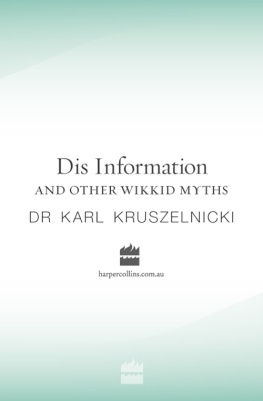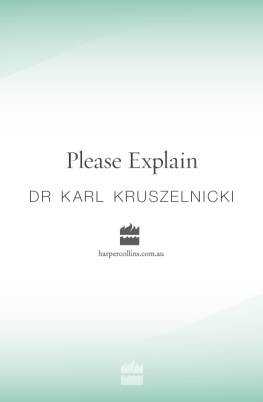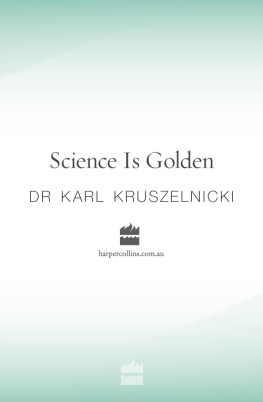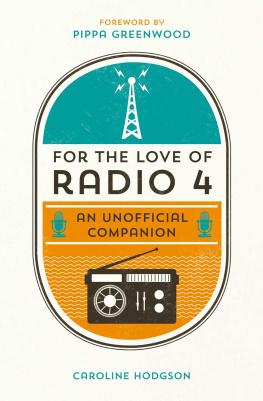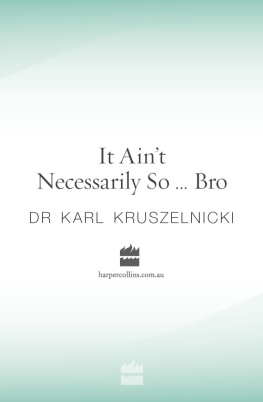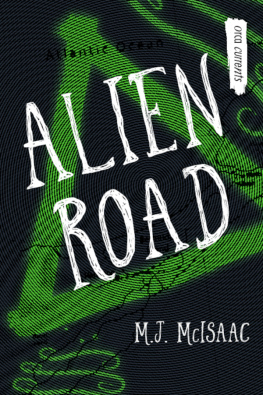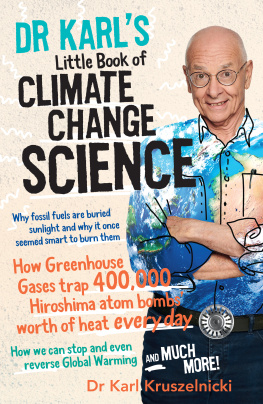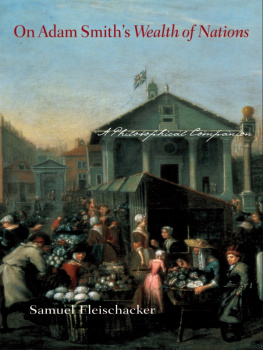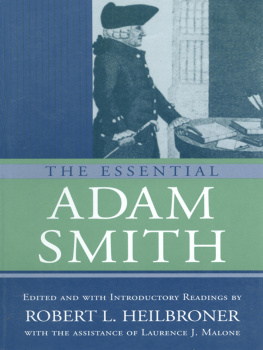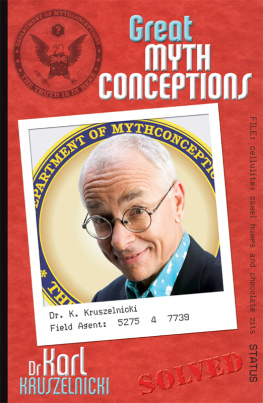I dedicate this book to the Internet, for its excellent role in disseminating Dis Information
Antibiotics are one of the greatest success stories of modern medicineup there with the discovery of vaccination, and the discovery that you shouldnt mix your drinking water and your toilet water. Like all drugs, antibiotics can have their bad side effects, but their benefits are enormous. Even so, some people wrongly believe that antibiotics are so dangerous that they should never be used. And, specifically, lots of people also wrongly believe that you should not drink any alcohol while taking antibiotics.
History of Antibiotics
Antibiotics go back a long way. The Chinese first used antibiotics about 2500 years ago. Back then they realised that the fungus that grew on soybean curd could cure boils. This ancient wisdom was known even earlier to the healers of Egypt and Mesopotamia. The soybean fungus was making a chemical (streptomycin), one of the first antibiotics. If you ate this antibiotic, it killed the bacteria that caused the boils. In fact, this same fungus today gives us streptomycin, which is our main defence against the bacterium Yersinia pestis that caused the bubonic plague.
In 1910, Paul Ehrlich helped introduce Salvarsan (containing arsenic) to successfully treat syphilis. The sulfonamide family of antibiotics was introduced in 1932, and some of them are still used today.
The first really powerful and widely used antibiotic, penicillin, was discovered by Alexander Fleming way back in 1928. Once again, it was made by a fungus. This fungus was called Penicillium notatum. Fleming noticed that a chemical made by this fungus would stop Staphyloccus bacteria from growing. Unfortunately he was a bacteriologist, not a biochemist, so he could not purify this mysterious chemical. Even so, he wrote about his discovery in the British Journal of Experimental Pathology in 1929.
In 1938 the brilliant biochemist Ernst Chain read this paper and managed to isolate and purify this mysterious chemicalnot to try to invent a wonder drug, but just out of scientific curiosity. He called it penicillin, after its parent fungus. He worked in a pathology lab at Oxford University, which was run by Howard Florey. At first, Chain didnt get much support from Florey. Chain wanted to test his penicillin by infecting two mice with bacteria and then injecting penicillin to see if it cured thembut he didnt know how to do injections, and Florey wasnt interested in helping. Chain had to get another colleague to inject the mice first with the bacteria and then with his mysterious penicillin. The penicillin worked, the mice recovered fullyand suddenly Florey was very interested.
The Golden Age of Antibiotics
The next step was to test pencillin on humans. It was painstakingly difficult to get any penicillin at all, but eventually they had enough. In 1940 a 48-year-old London policeman, Albert Alexander, made a tiny cut in his skin while shaving. A bacterium invaded his body through this cut and soon infected him. At deaths door, he was rushed to the Radcliffe Hospital with a temperature of 40.5C. Florey and Chain gave him penicillin and he began to recover. After five days they ran out of penicillin, andAlexander began to worsen. They managed to purify some penicillin out of his urine and he began to recover again. Finally there was no more penicillin, and Albert Alexander died. Florey and Chain had showed that penicillin worked, and that it wasnt harmful. So the treatment workedbut the patient died.
The Loving Lurgies

Tiny quantities of penicillin were soon made available to cure a very small number of people. Even though Fleming had long stopped researching Penicillium notatum, he still kept an eye on it. He had a friend who was dying from an infection, and managed to get him cured with some of the precious penicillin.
Chain and Florey were very concerned that a Nazi air raid might destroy their building and all their research. Before they went home each night, they would rub some of the raw fungus inside the pockets of their trousers. So if their lab was flattened overnight, they would still have some fungus left with which to start up again.
More is Better
Chain had been brilliant in isolating and purifying penicillin; Florey was brilliant in the next stageramping up from small quantities to mass production, by using some of the technology employed in brewing beer. He grew the Penicillium notatum fungus in enormous 95 000-litre vats with air bubbling through. This meant that the fungus could grow anywhere in the volume of the tank, not just on the surface.
But Penicillium notatum did not make enough penicillin, especially of the quantity required to deal with the massive number of wounds and infections caused by World War II. As soon as the scientists realised this, they set out on a search for more productive penicillin moulds, from rainforests to the backs of peoples fridges. Mary Hunt, a laboratory worker in Peoria, Illinois, hit the jackpot when she brought in a canteloupe (rockmelon) infected with a pretty, golden mould. This particular fungus was Penicillium chrysogeumand, in its natural form, it delivered 200 times as much penicillin as Penicillium notatum. By the time Florey and his American colleagues had finished mutating the new fungus with X-rays, and selectively breeding it, they had something that yielded 1000 times more penicillin than Penicillium notatum.
In the five months from January to May 1943, they could make 400 million units of penicillin. By the end of 1945, the American factories were making 650 billion units each month. Also in 1945, Fleming, Chain and Florey shared the Nobel Prize for Physiology or Medicine.
Wonder Drug
The first batches of penicillin in 1943 were reserved specifically for the military. Later, as larger quantities were produced, it was made available to civilians, first only for life-and-death cases, and then for general use in the community.
Penicillin was truly a miracle drug when it was first introduced. It worked quickly and effectively against pneumonia, meningitis and hundreds of other deadly diseases. It was also especially effective against what were then called venereal diseases (VDs) and are now called sexually transmitted diseases (STDs).
The Myth
The VD clinics of the 1950s and 60s gave the sombre and serious advice that alcohol should absolutely never be used while taking penicillin. But, in reality, there wereand areno significant chemical interactions between penicillin and alcohol. The real reason the VD doctors and nurses gave this advice was based on moral, not pharmacological, grounds. They were worried that alcohol would reduce the inhibitions of the VD sufferers, who, while under the influence, might get a little frisky and pass on their infections to other peoplebefore the penicillin had a chance to cure the sexually transmitted diseases.
And thats how the mythconception that alcohol should never be taken with antibiotics arose.
Even so, its well known that alcohol can interact quite nastily with a small number of modern drugs such as tinidazole (brand name Fasigyn) and metronidazole (Flagyl), potentially causing nausea, vomiting, abdominal cramps, headaches, fast heart rate and flushing. And alcohol can reduce the absorption of other antibiotics, such as the doxycyclines and some other tetracyclines. But these few interactions are well known to both medical doctors and pharmacists.
Mind you, too much alcohol can put an extra load on your liver and immune system, can impair your judgment, liberate aggressive tendencies, reduce your energy stateand be associated with staying up late, behaving recklessly and not getting all the rest that your body needs to heal itself. So half a glass of an alcoholic beverage of your choice would be fine with most antibiotics, but probably no more than that

